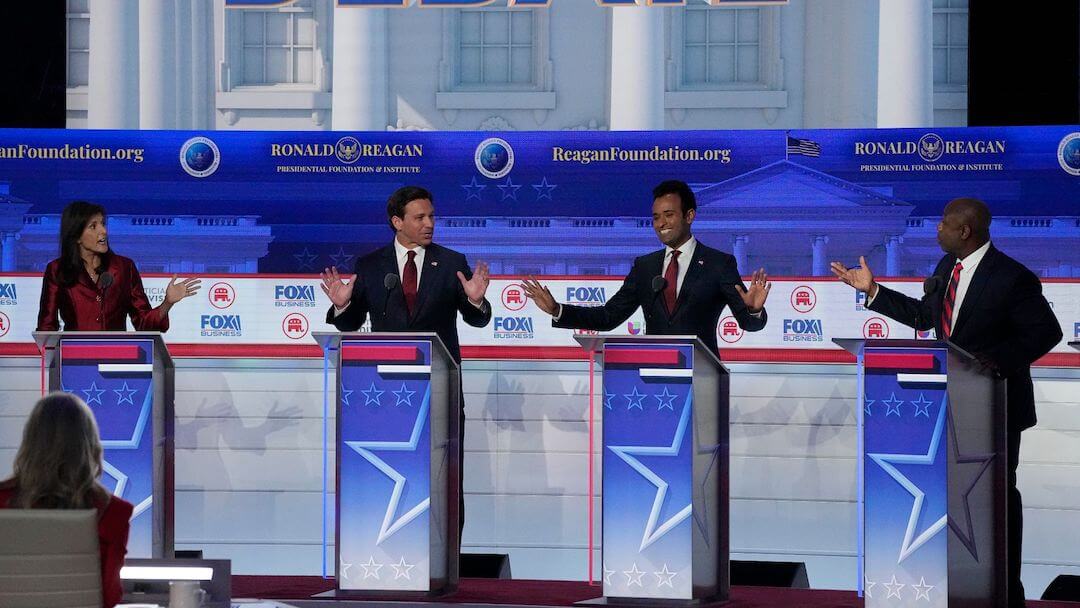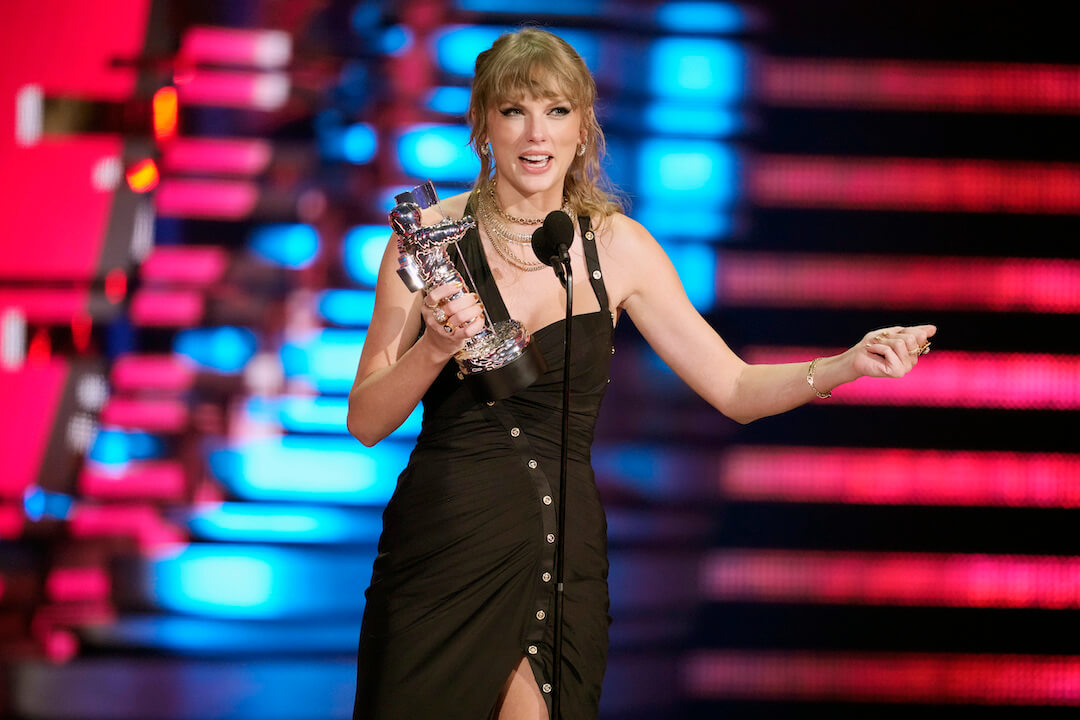Gannett has received nearly 1,000 applications for its Taylor Swift and Beyoncé reporting positions, The Wall Street Journal reported.
The job listings went up a little over two weeks ago, and since then, the company has received applications from journalists and nonjournalists alike. Among the applicants are a White House reporter, a flight attendant and several TikTok influencers.
Though the new positions have received a lot of press and excited chatter on social media among fans of the two artists, some of Gannett’s current and former journalists have criticized the move. The company — which operates more than 200 daily newspapers — cut 6% of its news staff last December, hollowing out many of its papers. Unionized journalists have lambasted the company for slow-walking contract negotiations and failing to pay its workers adequate salaries.
Gannett chief content officer Kristin Roberts told the Journal that the Taylor Swift and Beyoncé jobs will generate revenue to support the company’s local newsrooms: “This is how we save local journalism. This is what we need to do.”
During its most recent earnings call on Aug. 3, Gannett announced it expects to end the year with anywhere between a $10 million loss and a $20 million profit. The company owes over $1 billion of debt stemming from its 2019 merger with GateHouse and expects to pay more than $130 million of debt by the end of 2023.
Since March, Gannett has hired 260 journalists and currently has more than 100 open positions. Roberts told the Journal that if the Taylor Swift and Beyoncé positions are successful, the company may create more roles dedicated to popular personalities or topics.
By Angela Fu, media business reporter
How did the second GOP debate go?

From Wednesday’s Republican debate, from left to right, former South Carolina Gov. Nikki Haley, Florida Gov. Ron DeSantis, businessman Vivek Ramaswamy and South Carolina Sen. Tim Scott. (AP Photo/Mark J. Terrill)
How did Wednesday night’s second Republican debate go? In a word: meh.
Nothing stood out, but it wasn’t a total dumpster fire either. There were moments when it spun out of control from cross-talk and interruptions, but there weren’t as many of those moments as in the first debate. And with seven candidates and three moderators, some of that is to be expected.
But, overall, nothing much happened.
The Atlantic’s John Hendrickson called the debate “chaotic, sloppy, largely substance-free.” He added, “Seven candidates desperately fought for fresh relevance; none of them came away with it.”
The moderators — Fox News’ Dana Perino, Fox Business’ Stuart Varney, and Univision’s Ilia Calderón — had a few decent moments, such as when Calderon asked former Vice President Mike Pence what he would do to address the rising violence against LGBTQ+ people if he was elected president. Pence dodged the question by saying he would stand for every American from every background before pivoting to another topic. But at least Calderon asked.
In fact, Calderon asked the toughest questions of the night. The New York Times’ Michael M. Grynbaum wrote, “… her questions appeared to catch some candidates off-guard and touched on viewpoints that are not regularly expressed by leading Republican politicians or Fox’s conservative prime-time hosts.”
But, overall, the moderators, mainly Perino and Varney, didn’t stand out either.
Vox’s Andrew Prokop wrote, “In an attempt to retain tight control of the proceedings, the moderators regularly cut off exchanges between the candidates, rushing onward to get to the next question in their preset list. At one point, Perino even chided the candidates for mentioning each other too much, saying that would mean they’d get fewer questions.”
The problem with this debate is that it included seven people who were getting crushed in the polls by Donald Trump, who was not there, and yet the moderators largely avoided saying Trump’s name. What made that all the more disappointing was that, before the debate, Perino told Politico’s Kelly Garrity, “The way to have a breakout moment is not about what you’re going to say about the current president. It’s about how you think that you would be a better president than the one we have now, or the one that we’ve had before that is running again.”
Pretty much the only time Trump’s name was mentioned was when the candidates brought him up. Even then, the criticism of Trump was pretty tepid, which is what made the debate seem all the more pointless. The candidates needed to somehow carve into Trump’s lead in the polls and yet no one wanted to say anything that truly criticized or even challenged him, other than him not actually being there. And not one question about Trump’s ever-growing legal and financial woes?
Trump was so dismissive that he called up the GOP to cancel all further debates so the Republicans could set their sights on defeating President Joe Biden.
There weren’t many viral moments, other than former South Carolina Gov. Nikki Haley telling businessman Vivek Ramaswamy, “Honestly, every time I hear you, I feel a little bit dumber.”
In the end, nothing really changed, it seemed.
The New York Times’ Shane Goldmacher, Maggie Haberman and Jonathan Swan wrote, “The meandering and at times indecipherable debate seemed to validate former President Donald J. Trump’s decision to skip it. With only occasional exceptions, the Republicans onstage seemed content to bicker with one another. Most of them delivered the dominant front-runner only glancing blows and did little to upend the political reality that Mr. Trump is lapping all of his rivals — whose cumulative support in most national polls still doesn’t come close to the former president’s standing.”
The debate averaged 9.5 million viewers across all platforms, a 26% drop from the first debate in August.
By Tom Jones, senior media writer
Society of Professional Journalists cancels 2024 conference
The Society of Professional Journalists has canceled its 2024 conference, reported The SPJ News, a pop-up news website for SPJ’s 2023 conference.
SPJ president Claire Regan said the cancellation was a cost-cutting measure, with SPJ’s nine-member board voting 7-1 (one member was absent) to cancel the 2024 conference.
Incoming SPJ president Ashanti-Blaize Hopkins told The SPJ News that the organization is struggling financially and trying to come up with different answers for its financial problems, including suspending the conference for 2024.
“This is really a way to make sure we are moving in the right direction when it comes to our finances,” she said.
By Annie Aguiar, audience engagement producer
Reuters report: Prospects aren’t bright for a surge in paid digital subscriptions
A current dream of U.S. publishers is to convert paid digital subscriptions from a good start to a big success as a revenue source. Best case, that could eliminate the need for print versions and the expense of producing and distributing them.
However, the latest in a series of sobering reports from the Reuters Institute at Oxford, released Thursday, finds the market for digital news is now mature in the U.S. and even more problematic in other Western countries like the U.K. and Germany.
Like many previous studies, the Reuters report found only 20% have paid for a digital news subscription in the last year and fewer than half would even consider doing so. Potential subscribers can be lured by low introductory rates like $1 per week, especially if they extend for longer periods like a year. Some like what they see enough to continue when full rates kick in, but more found the price hikes too high and canceled or said they didn’t read enough for the expense to make sense.
Other findings of note:
- Cost-of-living factors have heightened sensitivity to paying for pricey subscriptions. Young people particularly consider whether news subscriptions fit their budget when they are already spending heavily on entertainment packages.
- In other Reuters studies, notably of trust in news, the United States has rated poorly in international comparisons. However, in this one, researchers found the U.S. had roughly twice the percentage of digital subscribers compared to the U.K. and Germany (21%, compared to 9% and 11%). The study hypothesizes that multiple high-quality newspapers drive the U.S. result; in Germany and the U.K., many potential subscribers feel that they can get the news they need for free from outlets like the BBC.
- Among long-term digital news subscribers, 60% are men.
The report suggests several avenues for driving paid digital higher, including lower prices for adult youths and students and allowing some sharing among subscribers.
The report says the healthy percentages of growth in the last decade appear to have plateaued but at least have not fallen. But it cautions, “Even if the ‘price puzzle’ can be solved, there is a more fundamental challenge. Some people who are interested in news do not want to be tied to or ‘limited’ by one source, and most of them are not prepared to pay for multiple news subscriptions.”
By Rick Edmonds, media business analyst
Global sports of the Times
The New York Times turned over its sports coverage this month to The Athletic, the website it bought at the start of 2022 for $550 million. And while it might have shut down what was once its own sports desk earlier this month, it made an announcement Thursday about sports coverage that will include a handful of Times sports staffers.
Andrew Das, Jeré Longman, Tariq Panja, Rory Smith and James Wagner are all joining the Times’ international desk to help what is being called a “Global Sports Sports Team.”
In a memo, the Times wrote, “Their mission will be to report on sports — as well as the people, businesses and ideas that animate them — and what they reveal about societies around the world.”
Smith, the Times’ superb soccer writer, and Panja will be based in the United Kingdom. Longman will travel all over the world as a dedicated Olympics correspondent. Das will oversee their work from London. And Wagner will work out of Mexico City and mostly cover the intersection of sports and culture in Latin America.
By Tom Jones, senior media writer
Media tidbits and links for your weekend review
- The Washington Post’s Hannah Natanson with “She challenges one school book a week. She says she’ll never stop.”
- Another must-read from Washington Post sports columnist Sally Jenkins: “You thought you knew the NFL. Now meet Taylor’s Version.”
- Tech and media journalist Kara Swisher has interesting (and critical) comments about Fox News and new News Corp. chair Lachlan Murdoch in this conversation with CNN’s Christiane Amanpour. And in this clip, Swisher calls Rupert Murdoch “the single most destructive force in America, England and Australia.”
- Speaking of … Swisher surprised attendees of Vox Media’s annual Code Conference Wednesday night when she interviewed Yoel Roth, Twitter’s former trust and safety department head, an hour before the platform’s new CEO Linda Yaccarino was due to take the stage. During Yaccarino’s session, she asked “Who wouldn’t want to see Elon Musk sitting by their side?” People in the audience laughed and raised their hands.
- Democrats will host a four-hour livestream today with Twitch and YouTube stars. Taylor Lorenz writes for The Washington Post that “the significance of the event may be what it says about the way Democrats and Republicans are seeking to engage with potential voters online.”
- Wall Street Journal sports columnist writes about the former high school of Journal reporter Evan Gershkovich, who is being jailed in Russia: “A Beautiful Game for Evan. The Goal Is the Same.”
More resources for journalists
- Celebrate journalism and democracy with Anderson Cooper at Poynter’s annual Bowtie Ball in Tampa, Florida, on Saturday, Nov. 18. Get tickets.
- Subscribe to PolitiFact’s weekly newsletter. Get facts delivered straight to your inbox.
- Poynter’s Beat Academy (Webinar series) — Enroll now.
- Lead With Influence (Nov. 6-27) (Online seminar) — Apply by Oct. 13.
Have feedback or a tip? Email Poynter senior media writer Tom Jones at tjones@poynter.org.
The Poynter Report is our daily media newsletter. To have it delivered to your inbox Monday-Friday, sign up here.









